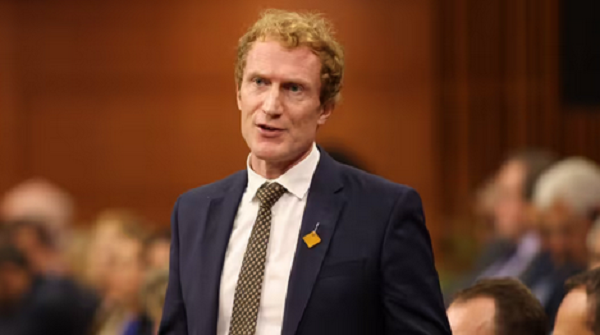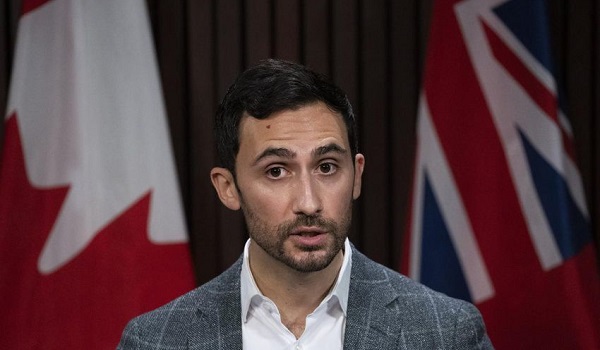Canada’s immigration system include giving permanent residence in small Canadian towns to new immigrants
Immigration Minister Marc Miller unveiled a blueprint Tuesday to better align Canada’s immigration system to the country’s needs, with changes that include a program to encourage newcomers to settle in small towns, francophone communities, rural areas and the North.
Mr. Miller disclosed plans to make permanent a pilot program that creates a fresh path to permanent residence for immigrants who want to live and work in small cities such as Moose Jaw and North Bay.
At a press conference in Ottawa, Mr. Miller also revealed he is looking at ways to attract more skilled construction workers from overseas to help build homes.
He said not enough workers with house-building skills are coming here and he is looking at whether new streams for skilled immigrants could be created.
Speaking at the press conference at an Ottawa migrants’ centre offering employment and skills support, Mr. Miller said it was important not to look at newcomers as “a drain on the system” but of benefit to Canada, though he said a “social consensus” on immigration is important.
A recent survey published by the Environics Institute found support for immigration has fallen sharply over the past year as Canadians increasingly tie affordability and housing concerns to a historic influx of newcomers.
Forty-four per cent of Canadians think immigration levels are too high, up from 27 per cent last year, according to the survey conducted in partnership with the Century Initiative, an organization that advocates for Canada’s population to hit 100 million by 2100. The Environics survey was based on telephone interviews with 2,002 Canadians between Sept. 4 and 17. The results are accurate to within plus or minus 2.2 percentage points in 19 out of 20 samples.
Mr. Miller’s blueprint is in a report released Tuesday entitled An Immigration System for Canada’s Future – A Plan to Get Us There by Immigration, Refugees and Citizenship Canada. It includes measures to better align immigration programs “with the needs of the country.”
The report says the government wants to integrate housing, health care and infrastructure planning into deciding future immigration levels.
On Wednesday, the federal government plans to publish its targets for the number of permanent residents it plans to permit until 2026. In last year’s plan, Ottawa announced it would welcome 465,000 new permanent residents this year, with a target of 485,000 in 2024 and another 500,000 in 2025.
Experts are watching the 2026 figure as a signal of whether Canada plans to slow immigration to address concerns about shortages of affordable housing and the ability of communities to absorb large numbers of newcomers.
Ottawa plans to create a “chief international talent officer” to align skills needed in Canada with migration, and to assess the Immigration and Refugee Protection Act for needed changes. Among reforms to be examined are helping Indigenous people, with community members on both sides of the Canada-U. S. border, see family, work, hunt and attend ceremonies, without having to face arduous border-crossing rules each time.
The Rural and Northern Immigration Pilot program, which so far has covered cities including Vernon, B.C., and Thunder Bay, will be extended to more small centres, including those with francophone populations. The program, which encourages migrants to settle outside expensive metropolitan centres such as Toronto, allows local communities to play a role in recommending immigrants with job offers for permanent residency. They can also impose additional eligibility requirements.
Mr. Miller said immigrants could help communities plug skills gaps in rural areas, and help hospitals and schools on the verge of closing because of staff shortages stay open.
He signalled the development of an enhanced francophone immigration policy with targets to increase the number moving to Canada. More support for francophone students from sub-Saharan African countries such as Cameroon would help address barriers to coming here. Currently many are put off because of the requirement for foreign students to have at least $10,000 to support themselves for a year to obtain a study permit.
The plan also includes a revamp of Immigration, Refugees and Citizenship Canada’s website to make it easier to navigate, along with “enhanced automation” to speed up processing of some applications.
“The government of Canada is working to deliver a pleasant and user-friendly experience for all those who use our services – both in Canada and abroad,” the document said.
The government has recently been criticized for backlogs and delays, and the failure of immigration department officials to respond to queries, including from people in war-torn areas such as Afghanistan and Lebanon – where Canadians have been advised by the federal government to leave since the war between Israel and Hamas broke out.
To address backlogs, the report says IRCC plans to work to “align application intake with available admission spaces to prevent years-long waits that applicants can experience when demand far exceeds available spaces.”
Syed Hussan, executive director of Migrant Workers Alliance for Change, said migrants want to know when undocumented people would get status and “how working-class people in essential jobs will be able to come here with equal rights and permanent residency and not as exploitable temporary foreign workers or international students.”
This article was reported by The Globe and Mail















